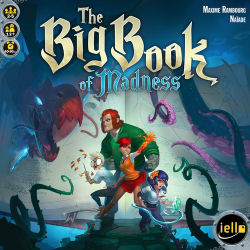Jan and I tried a learning game of The Big Book of Madness this evening. I was solidifying the rules in my mind as we were playing so Jan found it hard going and didn’t enjoy it as much as she might have but I thought it was really good.
This is a co-op game where everyone is building their own deck and using their cards to tackle the challenges thrown at the players. It seemed pretty tough even on the easy level and we lost due to running down the Madness card deck in the fifth round of six. However, that may have been exacerbated by the fact that I had ignored that one of the actions was to cure a madness card in your hand and return it to the deck so neither of us ever picked that option.
It plays up to five players and seems fairly easy to try solo so I think this should get played again pretty soon.




